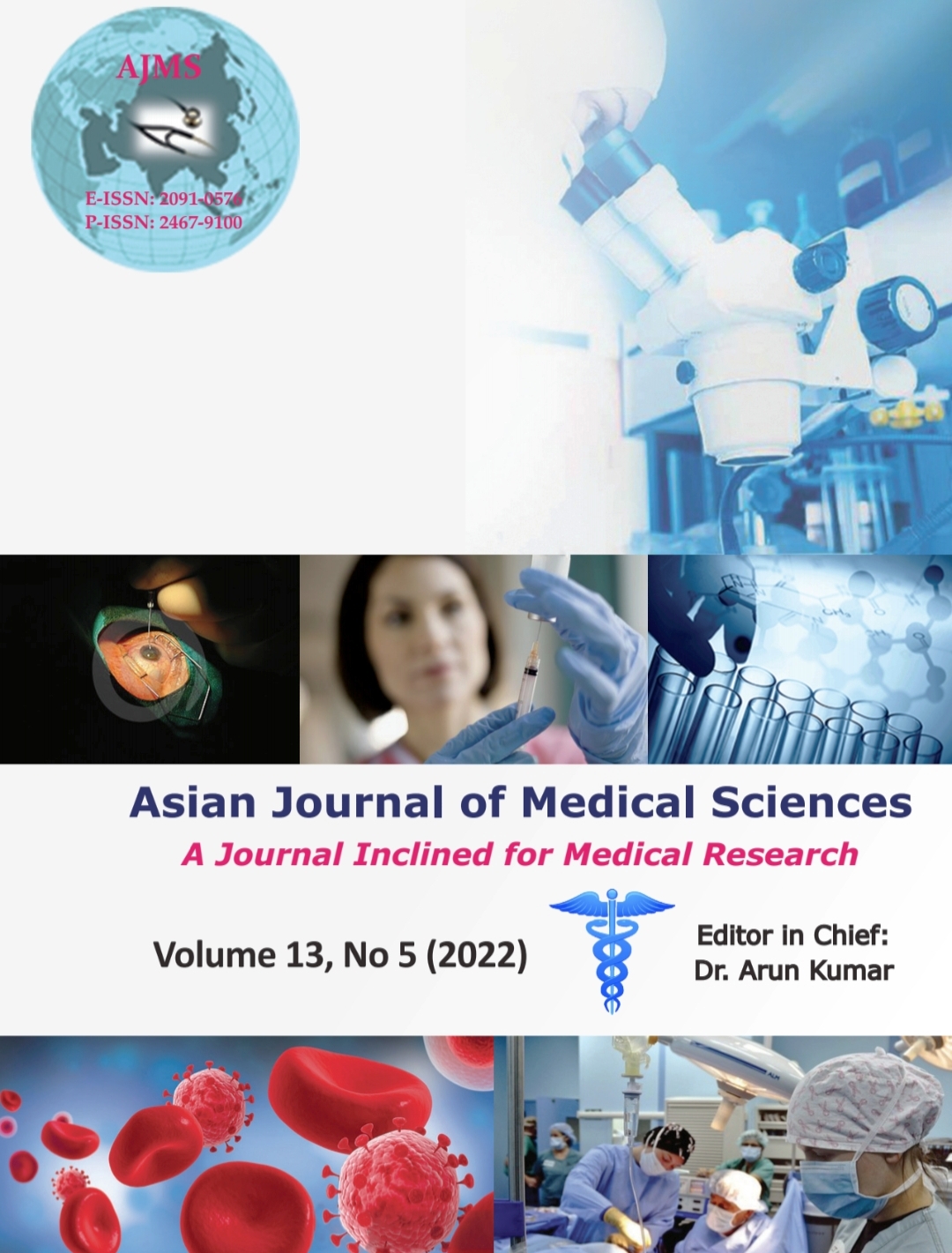A prospective study on clinical, radiological, and pathological features in early diagnosis of spinal tuberculosis
Keywords:
Cartridge-based nucleic acid amplification test, Histopathology, Percutaneous biopsyAbstract
Background: Spinal tuberculosis (TB) is the most common of musculoskeletal TB. The diagnosis of spinal TB is difficult due to the non-specific symptoms. Clinical assessment, along with radiological features and biopsy, plays an important role in early diagnosis of spinal TB.
Aims and Objectives: The aims of this study were to analyze clinical, radiological, and pathological features for early diagnosis of spinal TB and to identify other pathological conditions mimicking spinal TB.
Materials and Methods: The present prospective study includes 110 patients. All patients were clinically and radiologically examined. The patients underwent percutaneous biopsy of the involved region and tissue samples were subjected to histopathological examination (HPE) and cartridge-based nucleic acid amplification test (CBNAAT) for definitive diagnosis of spinal TB.
Results: Out of 110 cases, male preponderance (65.5%) was seen in comparison to females (34.5%). Dorsal spine (53.7%) and lumbar spine (41.3%) were the most common site of involvement. One hundred patients were confirmed as spinal TB by histopathology and molecular diagnosis. Histopathology alone could make diagnosis in 40 cases while molecular diagnosis in 100 cases and 10 cases were non-tuberculous in etiology (metastatic deposits of carcinoma in five cases, pyogenic spondylodiscitis in three cases and primary neoplastic lesion in two cases, one case of giant cell tumor, and one case of hemangioma each).
Conclusion: Spinal TB is a deep-seated and paucibacillary condition difficult to diagnose due to inadequate sample. Therefore, multipronged approach by direct smear examination, HPE, and molecular diagnosis is required for early diagnosis. Culture is the gold standard for diagnosis while CBNAAT is highly sensitive and specific that enables rapid detection of tubercular bacilli and should be considered as first-line test.
Downloads
Downloads
Published
How to Cite
Issue
Section
License
Copyright (c) 2022 Asian Journal of Medical Sciences

This work is licensed under a Creative Commons Attribution-NonCommercial 4.0 International License.
Authors who publish with this journal agree to the following terms:
- The journal holds copyright and publishes the work under a Creative Commons CC-BY-NC license that permits use, distribution and reprduction in any medium, provided the original work is properly cited and is not used for commercial purposes. The journal should be recognised as the original publisher of this work.
- Authors are able to enter into separate, additional contractual arrangements for the non-exclusive distribution of the journal's published version of the work (e.g., post it to an institutional repository or publish it in a book), with an acknowledgement of its initial publication in this journal.
- Authors are permitted and encouraged to post their work online (e.g., in institutional repositories or on their website) prior to and during the submission process, as it can lead to productive exchanges, as well as earlier and greater citation of published work (See The Effect of Open Access).




